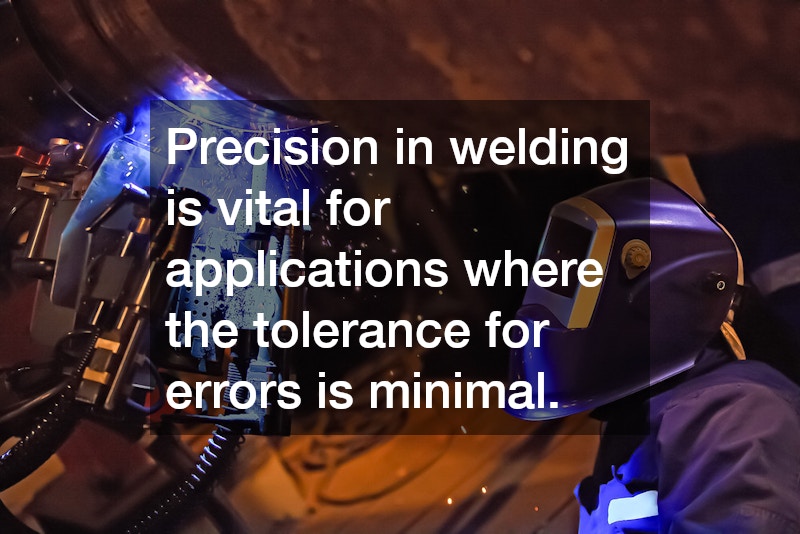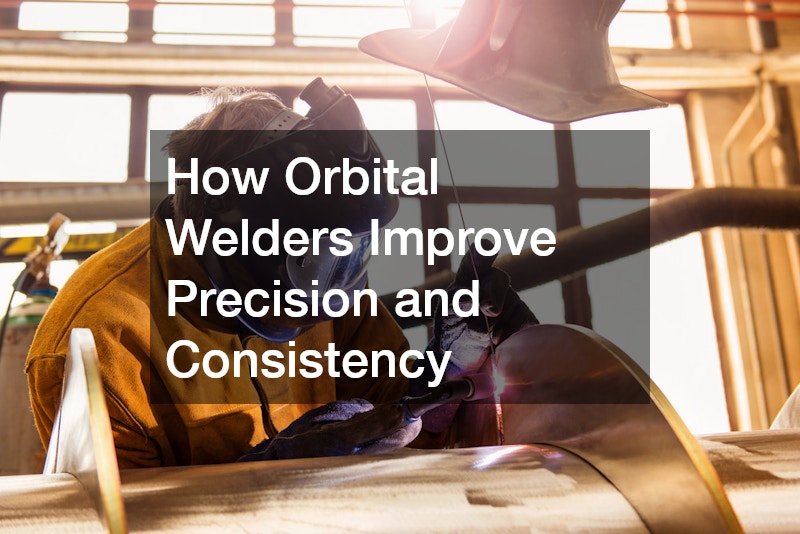How Orbital Welders Improve Precision and Consistency
Introduction
In the realm of modern manufacturing and construction, precision and consistency are crucial attributes required for successful projects. Orbital welding, an advanced welding technique, is gaining prominence due to its capability to provide superior precision and consistency. Orbital welders, equipped with cutting-edge technology, are instrumental in achieving the benchmark standards demanded by various industries, including aerospace, pharmaceuticals, and food processing. This article explores how orbital welders enhance precision and consistency in welding tasks.
What Are Orbital Welders and How Do They Work?
Orbital welders are specialized machines designed to perform welding processes in a precise, circular motion around a fixed workpiece. The term “orbital” refers to the method of rotating the welding arc 360 degrees around the object being welded. These welders are most commonly used to join pipes and tubes, ensuring a consistent weld quality over the entire circumference. The technology integrates automatic controls to manipulate the welding process, thereby reducing human error and increasing accuracy.
Understanding the Mechanism of Orbital Welding
The mechanism of orbital welding involves three primary components: the power supply, the orbital head, and the control system. The power supply provides the necessary energy to generate the welding arc, which is crucial for fusing metals together. The orbital head, which holds and rotates the tungsten electrode, is guided automatically around the workpiece. This precise motion controls the heat input and allows for a uniform weld bead. The control system, usually featuring programmable logic, coordinates the entire operation, enabling the user to define parameters such as welding speed, current, and time. The integration of these components ensures that every weld is consistent, effectively minimizing the risk of defects.
The Role of Automation in Orbital Welding
Automation plays a vital role in the field of orbital welding, elevating its precision and consistency to levels unattainable by manual welding techniques. Automated systems eliminate many of the variables that can affect weld quality, such as operator fatigue, fluctuations in welding speed, and deviations in torch positioning. By maintaining a steady, predetermined process, these systems can produce welds that adhere strictly to industry standards and specifications. Additionally, the automation of orbital welding processes facilitates better documentation and traceability, which are essential features for sectors that prioritize quality assurance and safety.
Why Are Orbital Welders Essential for Precision?
Precision in welding is vital for applications where the tolerance for errors is minimal. Orbital welders are essential tools in achieving high precision because they can tightly control the critical parameters affecting weld quality. This level of control is particularly beneficial in industries such as aerospace, where the integrity of welds is paramount to safety and performance. The repeatability of orbital welders ensures that each weld is identical, providing confidence that the final product will meet the specified criteria.
Factors Enhancing Precision in Orbital Welding
There are several factors inherent to orbital welding that enhance precision. Firstly, the closed-loop feedback control system in orbital welders constantly monitors and adjusts the parameters in real-time, compensating for any deviations instantaneously. Secondly, the use of precision-engineered fixtures ensures that the workpiece is held in exactly the right position throughout the welding process. Thirdly, the controlled environment in which orbital welding is performed—often under inert gas purging—minimizes contamination and oxidation, leading to cleaner, defect-free welds.
Comparing Precision: Orbital Versus Manual Welding
When comparing orbital welding to manual welding, the precision advantage of orbitals is evident. Manual welding is heavily reliant on the skill and consistency of the welder, who must maintain strict control over their movements and settings. This introduces variables such as human error and fatigue, which can compromise precision. In contrast, orbital welding systems are programmed to perform with exactitude, consistently producing high-quality welds time after time. As a result, industries with rigorous precision demands increasingly prefer orbital welding to ensure that product specifications are met without deviation.
How Do Orbital Welders Ensure Consistency Across Projects?
Consistency in welding is critical for ensuring that each component performs as expected under operational conditions. Orbital welders facilitate this consistency by automating the welding process, allowing the same parameters and process sequence to be applied repeatedly. This automation translates into identical welds across batches and projects, a feature highly valued in industries where uniformity is a requirement for structural integrity and functionality.
The Impact of Consistency on Quality Control
The consistency offered by orbital welding significantly enhances quality control processes. When each weld is produced with the same precision and adherence to set parameters, quality assurance becomes more straightforward, as there is less variance to monitor. This uniformity reduces the incidence of weld failures and rework, leading to streamlined production and increased confidence in the durability and performance of the finished product. Furthermore, consistent welds contribute to maintaining compliance with regulatory standards, aiding in the certification and approval processes.
Long-Term Benefits of Consistent Welds
The long-term benefits of consistent welds achieved through orbital welding extend beyond immediate cost savings from reduced errors. Consistent weld quality ensures that installations are safe and reliable, minimizing the risks of operational downtime and maintenance. For applications involving high-pressure vessels and critical infrastructure, the assurance that every weld will perform reliably over time is invaluable. This confidence translates into improved client satisfaction and a strong reputation for delivering high-quality products, ultimately contributing to the growth and success of businesses utilizing orbital welding technology.
Conclusion
In conclusion, orbital welders stand out as indispensable tools for achieving precision and consistency in welding operations. Their automated approach to welding not only produces superior quality welds but also enhances productivity by reducing the need for manual intervention. The integration of advanced technology ensures that each weld meets stringent industry standards, making orbital welding the preferred choice for sectors where quality and reliability are non-negotiable. As industries continue to evolve, the role of orbital welders in ensuring precision and consistency is set to become even more pronounced, paving the way for innovations in welding technology and applications.



